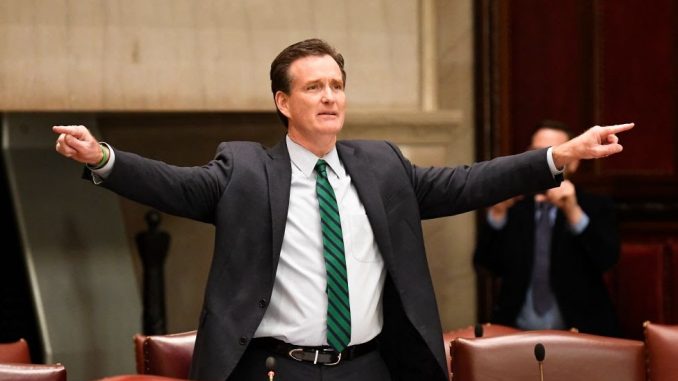
Will the last Republican left in New York’s state Senate please turn out the lights?
It’s not quite that bad … yet. But the Senate GOP leader, John Flanagan, this week announced that he’s not seeking re-election, the ninth member of his caucus to hang it up — and a tenth, Cathy Young, quit last year.
It was only in the 2018 election that the Republicans fully lost control of the chamber, though they had increasingly relied on alliances with renegade and/or “independent” Democrats, plus heavy gerrymandering.
But a huge thumping that year left the GOP with just 23 seats in the 63-member chamber. And if Republicans can’t retake it this fall, Democrats will redraw Senate district lines after the 2020 Census — likely locking in their power for at least a decade.
As this year began, Democrats were confident of picking up several seats this fall; then the disastrous impact of the no-bail law gave Republicans a cause and real hope.
But the corona crisis seems to have flipped expectations back. At least, so Flanagan’s unexpected retirement suggests.
A legislative minority can still have an impact — badly outnumbered Assembly Republicans still manage to quietly shape legislation. But it’s a big comedown from the days of Senate GOP dominance.
Maybe young blood can turn things around in time for November: Republicans have recruited at least eight solid candidates for the open seats — and no one really knows how the virus crisis will impact politics.
With the New York City Council overwhelmingly Democratic, along with the state’s House delegation and both US senators as well as all of state government, you know who to blame if you don’t like something in New York. Changing it, though . . .
And if Democrats dominate the Senate after Election Day, the big question for the future is whether New York winds up like Massachusetts, where voters for decades now have elected Republican governors to check heavily Democratic legislatures — or California, where the GOP has no statewide power at all.
*story by New York Post